- Category
- War in Ukraine
Weapons Making a Difference on Ukraine’s Frontlines
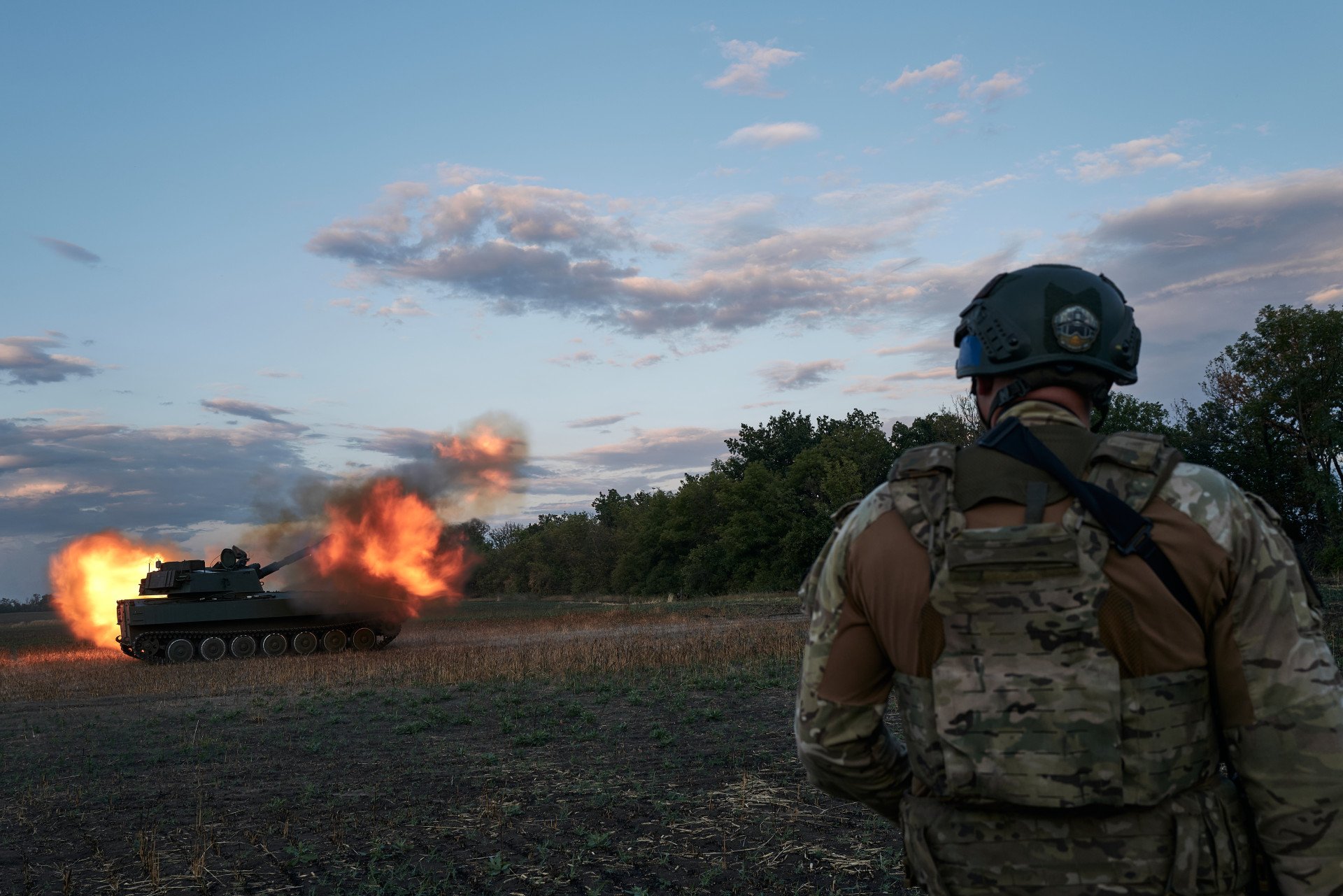
Russia’s “3-day” full-scale invasion of Ukraine is nearing 1000 days of war, with the Ukrainian Armed Forces defying expectations and dismantling what was once seen as the world’s second-best army. From troops to tanks, Russia’s losses have been staggering—thanks in part to Ukraine’s arsenal. Which weapons are making a difference?
For nearly 1000 days of war, Ukraine has stood resilient against Russia's full-scale invasion. As we look back, we assess what weapons have made a difference.
During Russia’s occupation of Crimea in 2014, its electronic warfare (EW) systems dominated, sowing chaos and targeting Ukrainian positions with drones. Ukraine has since overtaken Russia, emerging as a global leader in EW and drone innovation, becoming the first country to establish a dedicated “Unmanned Systems Forces” drone branch within its Armed Forces.
Ukraine has also vastly improved its domestic weaponry and is producing a significant amount of its arsenal. “While years ago, the Ukrainian defense industry unfortunately looked helpless, today it is an industry that is on its way to leadership, at least in Europe,” President Zelenskyy said in his speech at the second International Defense Industries Forum.
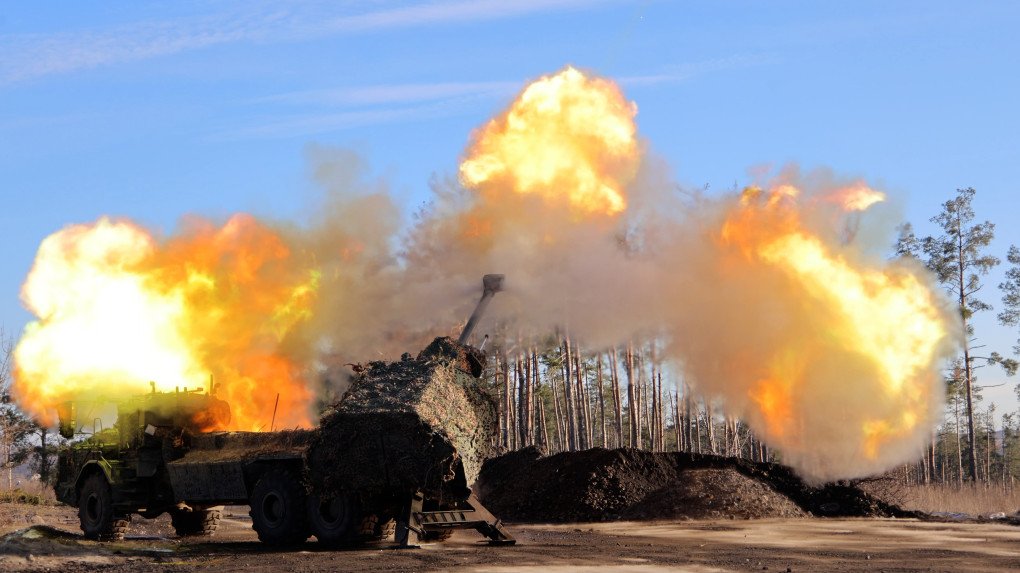
In the first half of 2024, Ukraine produced 25 times more artillery and mortar ammunition than the entire year of 2022. Ukraine is also now able to produce 4 million drones annually.
Ukraine has “already deployed a completely new class of Ukrainian weaponry—the long-range Palianytsia rocket drone,” Zelenskyy said. Ukraine is “producing artillery—Bohdana howitzers—at a rate of 15 units monthly, and sometimes as many as 20.”
What are Ukraine’s most effective frontline weapons?
The war in Ukraine is made up of an eclectic mix of trench and tech warfare, using cruise missiles, unmanned aerial systems (UAVs), main battle tanks, and ground robots, which all have an important part to play.
Each weapon system has strengths and benefits for Ukraine’s fight against Russian aggression. Due to the continuous changes on the frontline, it's difficult to assess whether one specific weapon system could change the pace of the war, but some key weapons are making a difference.
Artillery systems
Artillery, commonly called “King of the Battle”, is essential to holding and taking territory. Thousands of shells are fired by both Russia and Ukraine every day. In March 2024, officials estimated that Russia is firing around 10,000 shells a day, compared to Ukraine’s 2000. However, with Ukraine’s increase in artillery production, this figure has likely changed.
Ukraine has a variety of NATO systems in its arsenal, including the M142 High Mobility Artillery Rocket System (HIMARS), the M109 Paladin self-propelled gun, the Ceasar 155mm self-propelled howitzer, and the M270 Multiple Launch Rocket System (MLRS).
The M777 Howtizer—the “triple seven”—is considered one of the most elite.
M777 Howitzer
The M777 is a 155mm Lightweight Towed Artillery System, capable of firing five rounds per minute under intense firing conditions, and a sustained rate of fire of two rounds a minute.
The M777 is primarily manufactured in the UK but often assembled in the US. The US military alone has given Ukraine almost 200 M777 155mm howitzers with over 2 million artillery rounds.
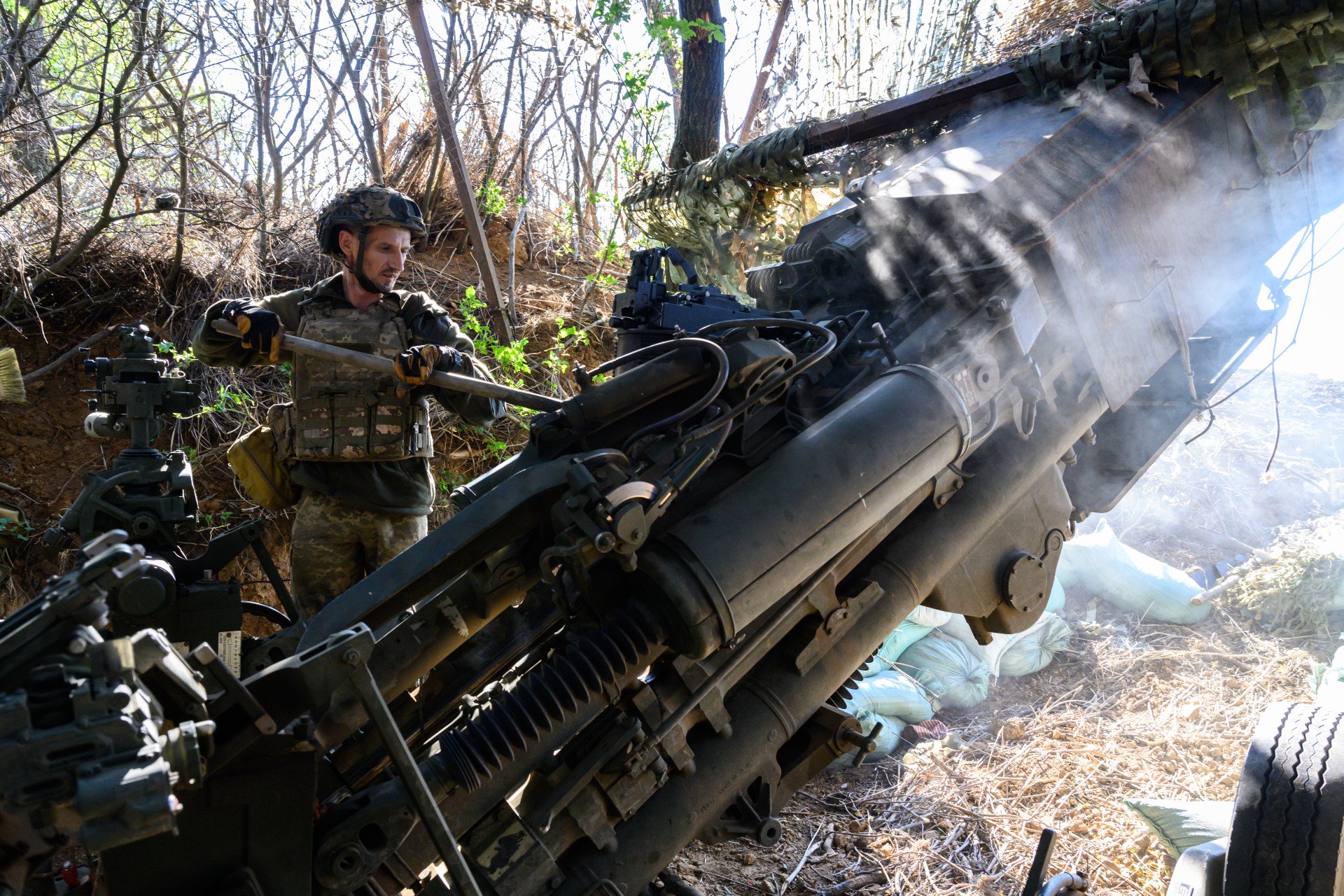
The US has also sent specialized rounds, M718 Remote Anti-Armor Mines (RAAM), which is an artillery shell with several anti-tank mines within it, and the M982 Excalibur precision-guided round, which can strike targets up to 40km away.
RAAM is a 155mm howitzer shell containing nine anti-tank mines that can be delivered at ranges 4 to 17km from the battery position.
During the battle of Vulhedar, the Kremlin was committing large volumes of troops but got caught in a chokepoint .
The large column of Russian tanks, infantry fighting vehicles, and armored personnel carriers exploded after Ukraine fired M718 RAAM shells littering them with mines as they pushed forward.
Aside from its fighting power, another benefit is that Ukraine can repair some parts of the damaged M777s using Ukrainian parts, produced in Ukraine. This is vital as waiting for parts from the West or sending the M777s abroad for repair causes huge delays, sometimes serval months. For example, delays at foreign depots have created artificial shortages of Leopard 2 tanks.
In January 2024, the UK defense contractor BAE Systems reported that they would restart parts production for the M777 as demand surged due to its performance.
"We do believe that the howitzers … are having an impact, particularly in Kharkiv,” a senior Defense Department official said at a Pentagon press briefing. “Now is that the only reason? I don't think we would go that far to say that, but we believe that the systems…are absolutely helping them regain some momentum and to take back some territory."
Drones
Both Ukraine and Russia rely heavily on drones for reconnaissance missions, and first-person view (FPV) one-way attacks. They range from small commercially available drones such as the DJI, to larger military-grade drones like the Bayraktar.
In September 2024, Ukrainian forces showcased its latest “Dragon” drone which can drop thermite onto Russian positions, like a dragon spitting fire. Thermite is not explosive but generates heat at more than 2,200 degrees Celsius (4,000 degrees Fahrenheit). It burns and damages nearly any material—clothing, foliage, and military-grade vehicles.
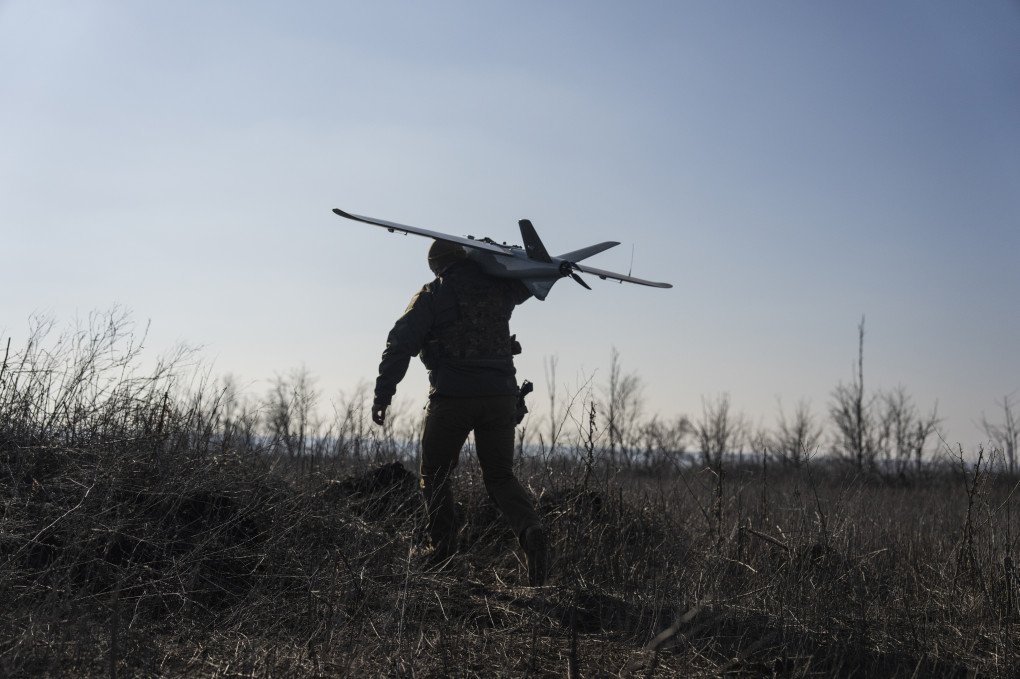
It is not illegal to use thermite on military targets. Ukraine has only used them on military targets, Action on Armed Violence (AOAV) the United Kingdom-based anti-war advocacy organization notes. Russia however, has used thermite on civilian targets in March 2023 during the battle of Vuhledar, says the AOAV.
First-Person View drones
"We call them celebration drones in Ukraine. They were used to film weddings and parties before the war," a drone operator told the BBC, highlighting that the FPV was their weapon of choice.
FPV drones are guided straight to their target by ground troops operating them remotely. This means that they are far more accurate than most artillery. FPVs can take on smaller, more specific targets like optics, and radars, and are often flown straight into buildings through windows or into the open hatch of an armored vehicle or tank.
Drone operators can work 5km from the frontline, making attack operations for the military far safer than other weapon systems. FPVs can be mounted with several types of weaponry, striking targets and exploding on impact or dropping weapons such as grenades from above.
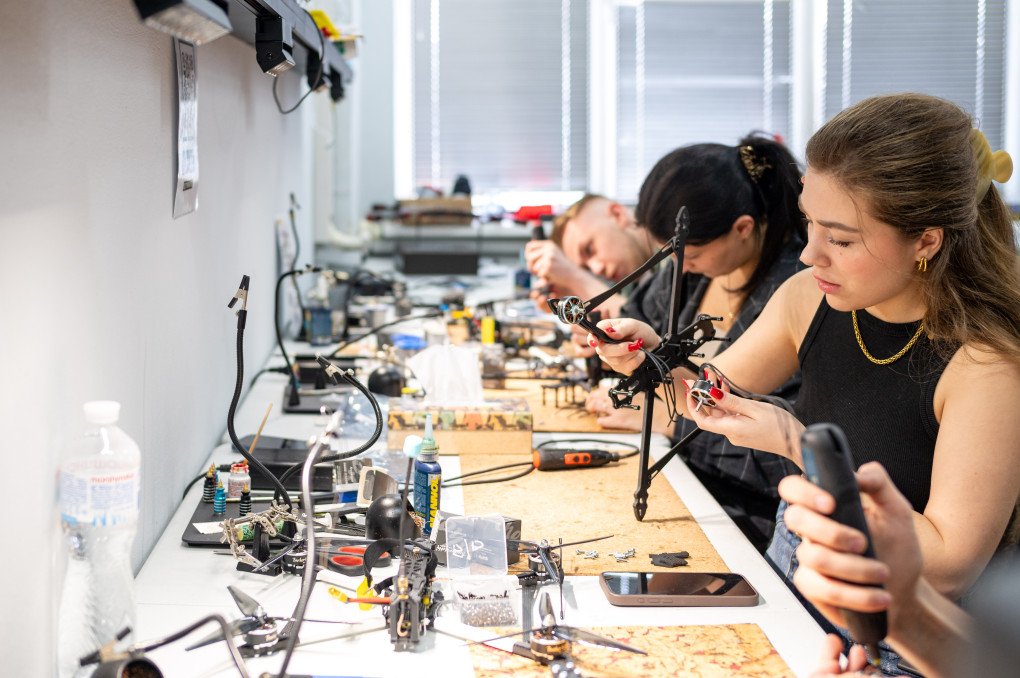
There is a huge variety of FPV drones which all differ in terms of range, payload, and maneuverability. They are cheap, produced worldwide, and are easily assembled, even on a kitchen table at home.
Between September 2023 to March 2024, 582 Russian tanks were damaged, 86 abandoned and 148 destroyed by FPV strikes from Ukrainian forces, according to Tochnyi, an open-source data analyst. This amounts to an average overall cost of $1516.7 million to Russian tanks, a cost far greater than FPVs which is around $500 per drone.
More than two-thirds of the Russian tanks that Ukraine’s military destroyed in the first few months of 2024 were taken out using FPV drones, a NATO official told Foreign Policy in April 2024.
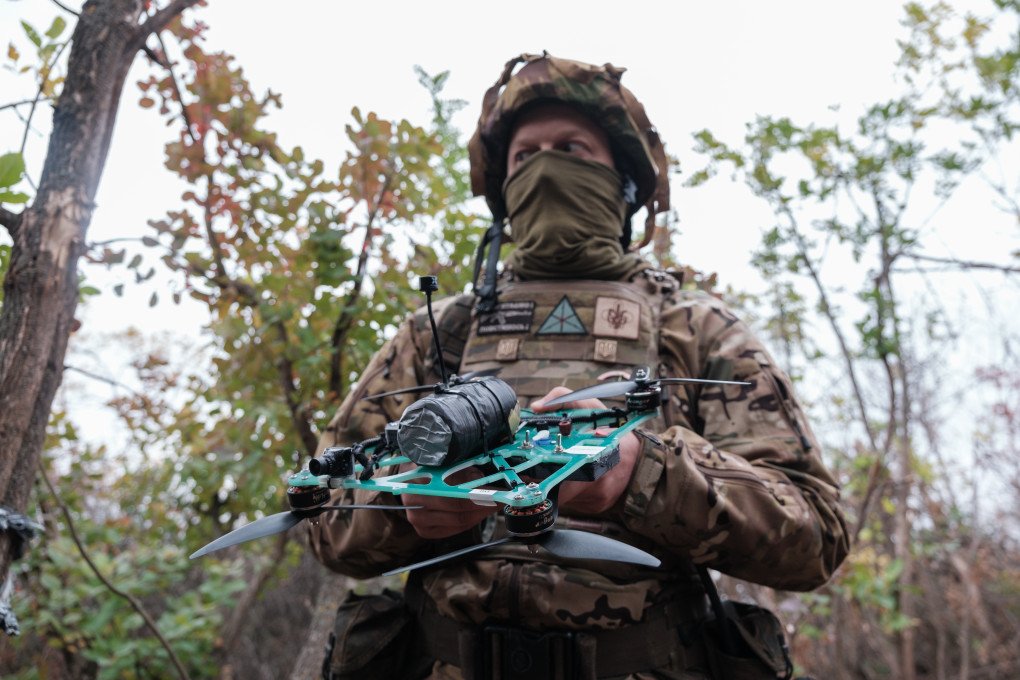
Missiles and missile systems
Long-range missiles play a critical role in precisely penetrating deep into Russian-occupied territories. Russian forces continue to target Ukrainian cities from launchers strategically positioned far beyond the frontline. Ukraine urgently needs additional weapons to effectively counter these attacks, targeting Russian ammo warehouses, depots, barracks, and supply lines.
Ukraine has already received some long-range missiles and has used them effectively. Storm Shadow missiles, supplied to Ukraine in May 2023, are Franco-British cruise missiles with a maximum flight range of about 250km.
Using Western long-range missile systems to strike targets inside Russia has been key on Ukraine’s agenda, along with further bolstering its arsenal. The “Taurus” missile continues to be one of Ukraine’s leading asks when discussing the delivery of military aid with partners. The “Taurus” missile has a 500km range and would be Ukraine’s farthest-reaching Western-supplied missile yet.
While NATO countries still deliberate over the use of Western-supplied long-range missiles against Russian military targets on Russian soil, Ukraine has been accelerating the production and development of its domestic long-range missiles, which can strike inside Russia without needing approval from allies.
Ukraine has introduced its first long-range rocket drone, Palianytsia, designed to target Russian airfields and strengthen its defense where Western weapons can't be used.
— UNITED24 Media (@United24media) August 25, 2024
United24 Media spoke with one of its developers and learned important details ⤵️https://t.co/3iYQIstSGN pic.twitter.com/iVZo8rC63g
Palianytsia rocket drone, named after a type of traditional Ukrainian bread, combines features of both a missile and a drone. Zelenskyy described the Palianytsia as “a new class” of weapons.
The Palianytsia has a range of up to 700km similar to the US-supplied ATACMS. This weapon is in range of various airfields, including Russia’s Savasleyka air base, and could potentially target at least 20 Russian airfields.
The Palianytsia looks promising, but while we wait to see its success, the US-produced ATACMS has proved itself in Russia’s war in Ukraine.
ATACMS missile system
ATACMS (Army Tactical Missile System) is a surface-to-surface guided missile fired from the HIMARS and MLRS M270 platforms, striking targets 300km away.
Since the US delivered the long-range ATACMS, Crimea, with more than 100 key military objects across the peninsula, along with the Kerch Bridge, a key logistical supply route for Russia, has been victim to numerous attacks from Ukraine.
Ukraine has had more than 12 successful strikes against key military targets across Crimea, eliminating or damaging Russian air bases, radar stations, communications points, and multiple Russian air defense systems—a serious blow to the Kremlin.
One month with ATACMS and here are the results. pic.twitter.com/3JMSrpavsJ
— UNITED24 Media (@United24media) June 6, 2024
Belbek Airfield which hosts Sukhoi Su-27 and Sukhoi Su-30 fighters, MiG-31 interceptors, MiG-29K fighters, and more, was struck by Ukraine. “S-300 anti-aircraft missile division, two S-400 anti-aircraft missile divisions, and two radars were destroyed along with the detonation of munitions,” Ukraine’s General Staff said.
Due to the ATACMS success, Russia has relocated 90% of its aircraft to military bases outside the missile's striking range. Since the aviation relocation, the US-based think tank Institute for the Study Of War (ISW) reported that there has been a reduction in Russian aviation activity. The relocation of their bases will also ultimately stretch their resources. Mid-air refueling, maximum payloads and loiter time over Ukraine’s battlefield will impact Russia’s tactics.
Ukraine continues to ask its Western allies for the “Taurus” missile, which would be their farthest-reaching Western-supplied missile yet. For now, the ATACMS continues to threaten the Kremlin’s military haven, making headway in eliminating serious threats at their source.
Air defense
Air defense systems are vital to countering Russian attacks, especially in cities across Ukraine. Kyiv city is surrounded by a strong network of air defense systems, while other cities across Ukraine need more systems for protection.
Russia regularly unleashes waves of Iran’s Shahed-136 drones, Iskander-M, and North Korea’s KN-23 ballistic missiles, highlighting the vital need for strong Western air defense.
There is a lack of air defense systems worldwide as their demand, until Russia’s war on Ukraine, had been relatively low. As of late 2023, Ukraine had approximately 564 anti-aircraft platforms in service, according to the International Institute for Strategic Studies (IISS). All European countries combined had only around 1,600 platforms.
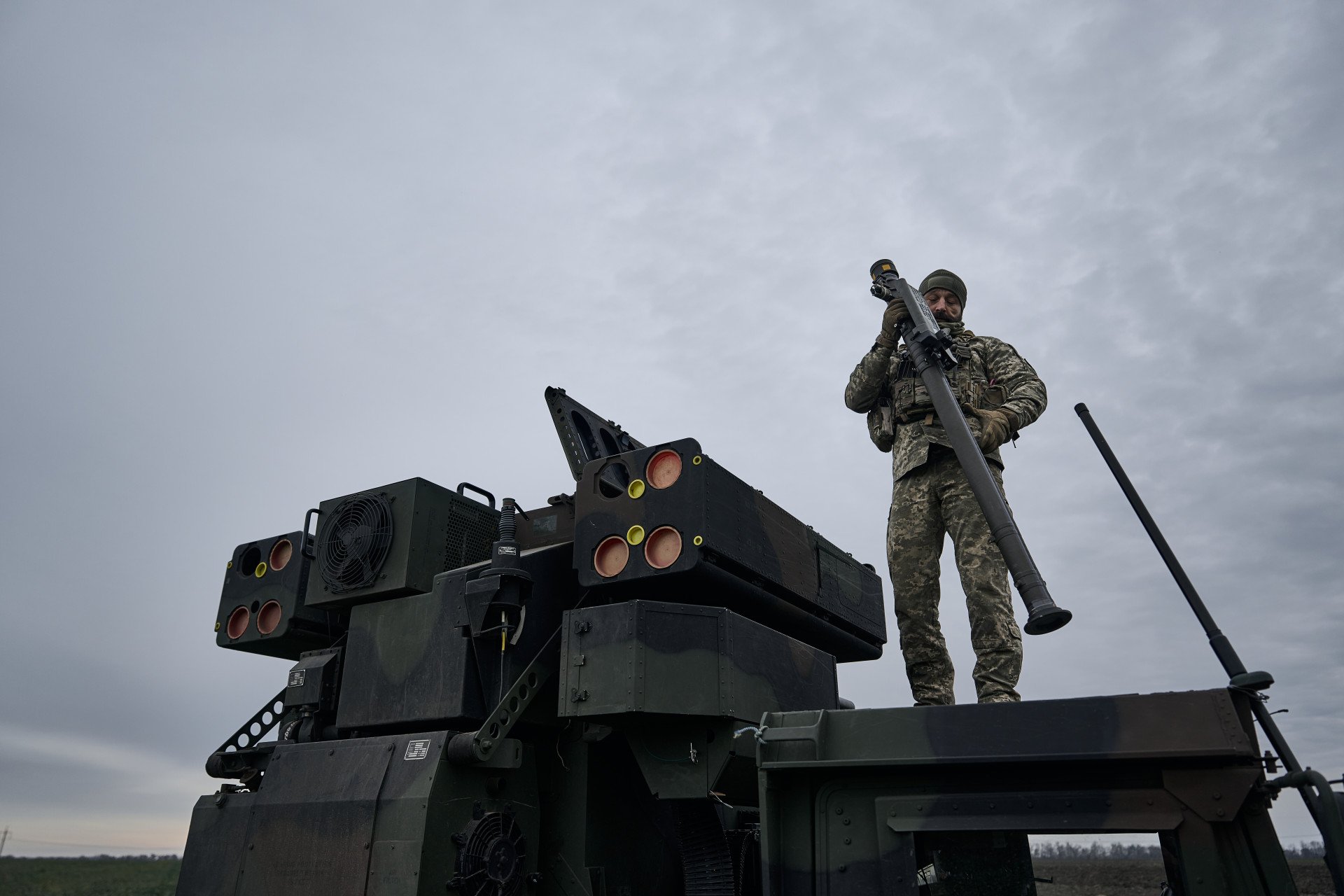
Ukraine uses a wide range of air defense systems of Western and Soviet varieties. All systems have their strengths and capabilities. Some are more precise and far more expensive than others. Short-range air defense systems such as the German Gepard and the US AN/TWQ-1 Avenger have proven effective against cheaper drones.
The “Patriot” and the “SAMP/T” air defense systems are far more expensive than the Gepard and would be used to target cruise and ballistic missiles, the SAMP/T specifically can down aircraft. Both of these batteries are scarce and though their operational specs are fairly similar, the “PATRIOT” is often regarded as the preferred system.
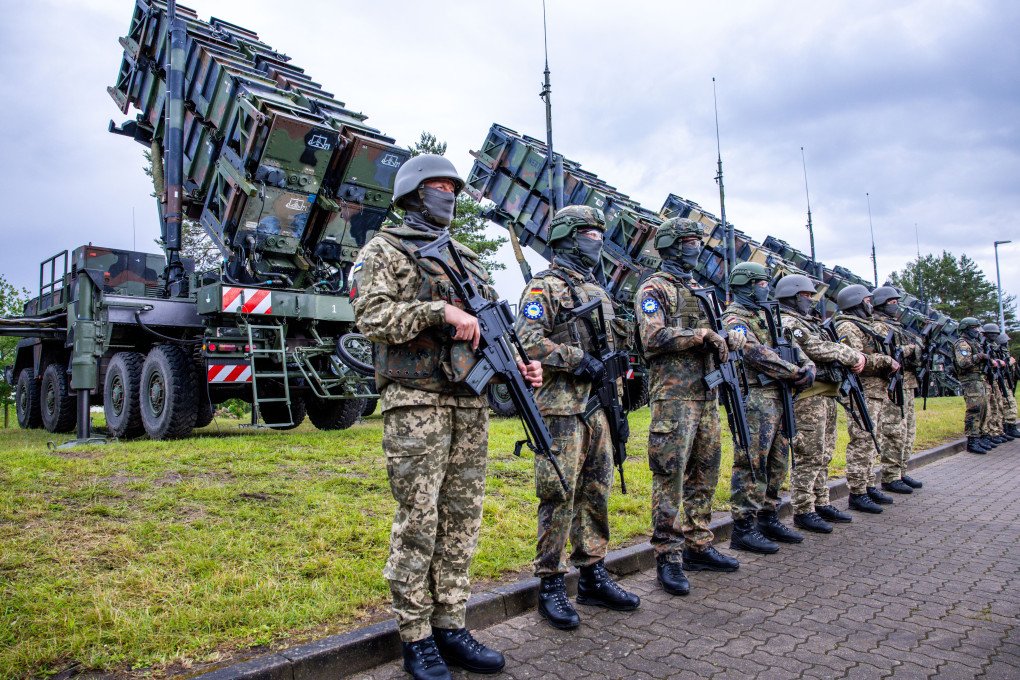
Patriot air defense system
“Although it is a complex system, it’s the most powerful, and nothing else works against ballistic threats,” said Zelenskyy.
US-made “MIM-104 Patriot” has been very successful in downing Russian cruise and ballistic missiles, including the Kh-47M2 Kinzhal “hypersonic” missile.
All Kinzhal ballistic missiles fired at Kyiv by Russian forces have been downed by the Patriot, Ukrainian Air Force Colonel Serhii Yaremenko said on July 4, 2024. Kinzhal missiles are launched from MiG-31K aircraft with a range of 2000km threatening the entire of Ukraine. The Kremlin claimed that their Kinzhal was near-impossible to intercept.
The Patriot has 3 main truck-mounted sections, a radar to monitor incoming threats and a control unit that can fire 16 missiles. The system can fire the latest PAC-3 MSE missiles that use hyper-accurate Ka-band millimeter seekers, meaning they can destroy targets through brute kinetic force on impact, known as “hit-to-kill”.
Each PAC-3 MSE missile costs around $3.7 million but is worth using against targets such as the Kinzhal.
The SAMP/T has a range of 350km and upward of 150km, a greater range than the Patriot at only 120km with the PAC-3 MSE missile. However, the Patriot is more flexible, especially when intercepting targets.
“The Patriot is by far the most used system in Ukraine, and it has had a good, if not stellar, track record,” said Fabian Hoffmann, a researcher on missile technology at the University of Oslo. “People trust what they see, and the reputation is there."
Main Battle Tanks
Main battle tanks (MBT) remain a vital part of Russia’s war in Ukraine despite being a war of advanced technology and drones. The rise of one-way attack drones and anti-tank missiles left some predicting the demise of tank warfare, especially as tanks are a high-priority target, but in fact, the reality is the opposite. Since January 2024, Ukrainian Armed Forces destroyed 3,179 Russian tanks—amounting to approximately 102 tank battalions, assuming each battalion consists of 31 tanks, according to Ukraine’s Defense Ministry on November 5.
Initially, both Ukraine and Russia were mainly fighting with soviet tanks, now Ukraine has several varieties of Western tanks that have certainly made a gear change to the war.
Russia’s T-72 and their new T-90 MBT were two of the most popular tanks in Russia’s arsenal. Putin once claimed the T-90 was the "world's best tank." Their notoriety and effectiveness have been proven to fail against anti-tank missiles like the AGM-148 Javelin, or suicide drones like the Switchblade 300.
FPV drone operators of the Ukrainian 47th Brigade show one of the most vulnerable parts of Russian T-90M tanks. A simple RPG-7 grenade hitting the lower back of the turret - the exact point where one of the ammo racks are - and the entire tank cooks off.
— (((Tendar))) (@Tendar) May 25, 2024
How fitting that it all… pic.twitter.com/YR0pTkcHKO
Both tanks have an automated loading system leaving their ammunition unprotected, essentially an easy-access explosive keg—with devastating results for the crew inside.
NATO partners have sent their own variants, with upgrades to various updates with extra protection and caging to prevent attacks, but other MBTs far exceed its capabilities.
British Challenger, French Leclerc, American Abrams, German Leopards, and Swedish Strv 122s are all leaders in their own right. It’s difficult to assess which tank may be making the biggest impact on Ukraine’s frontlines as each has its successes—but one tank, in particular, has a legacy to be proud of.
Challenger
The British-made Challenger has the world’s longest-recorded tank kill. Its successor—Challenger 2—is making a difference in Ukraine. One Ukrainian soldier even called the Challenger “a sniper rifle among tanks” claiming that a Challenger 2 had “undoubtedly set a world record (in Ukraine) when it hit a T-55 from a distance of more than 5 km”.
The Challenger prioritizes armor and firepower – making it slower than other tanks – but it is very well protected, it’s able to take several hits from the Soviet T-72 and the crew would survive.
Unmanned Ground Vehicles
Even as we near 1000 days of war, fighting is still fierce on the frontline. Ukraine seeks to minimize human loss and enhance the army’s effectiveness by further evolving its armament with Unmanned Ground Vehicles (UGVs)—the time for killer robots has come. Several UGVs—foreign and domestic—are working Ukraine’s frontlines in various capacities, from demining efforts to reconnaissance and defense.
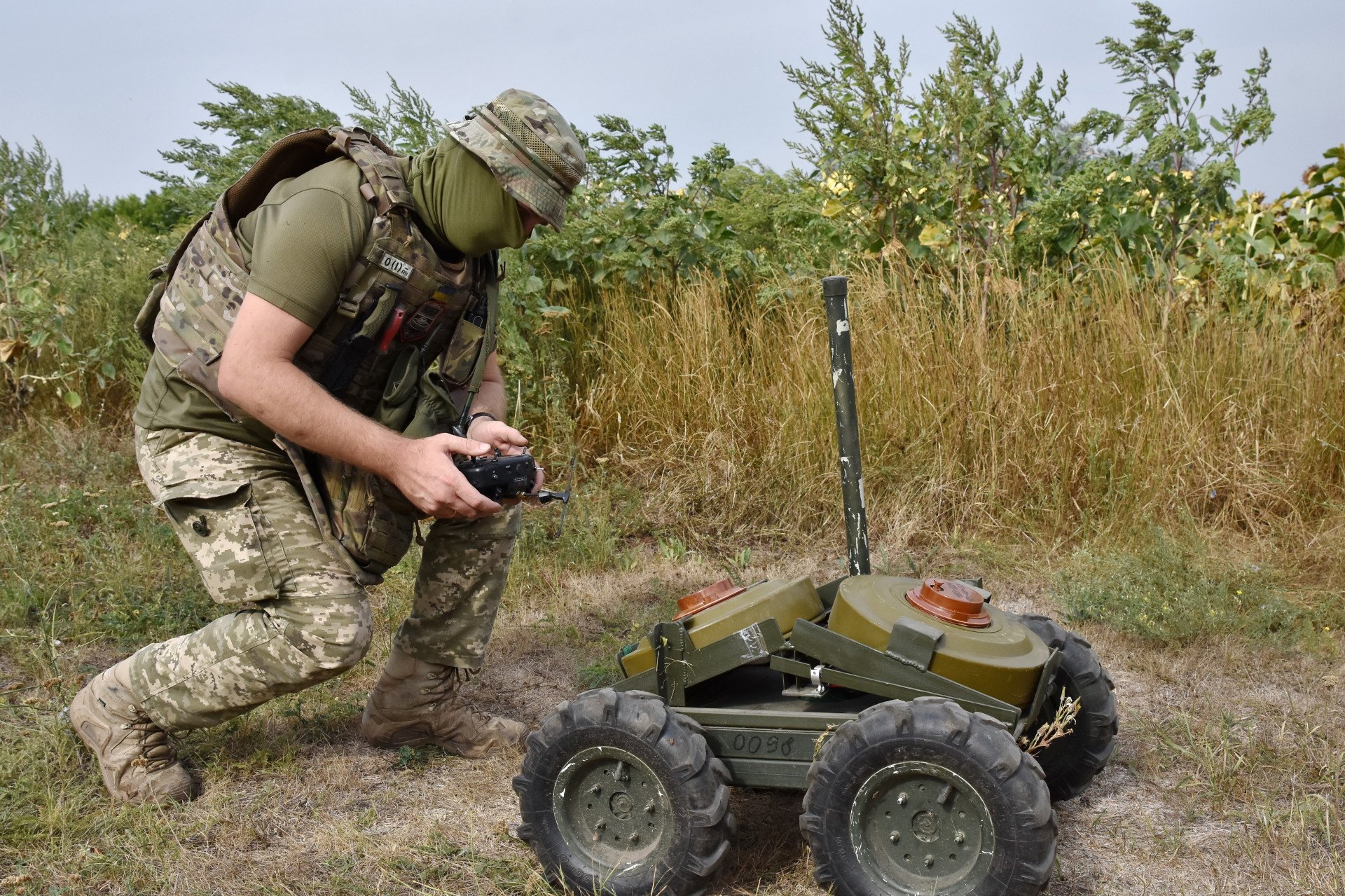
Ukraine has an impressive track record in the tech world, ranking 8th in global technological competency in 2022. To sustain the growing defense tech industry, UNITED24 has launched a long-term project called “PEOPLE DONATE – ROBOTS FIGHT,” aimed at funding various ground robotic systems that have graduated from the BRAVE1 Defense technology program.
By adopting advanced systems, Ukraine can turn the tide against Russia and create more favorable conditions on the battlefield.
“UGVs will become the next game changer in this war,” said Nataliia Kushnerska, Chief Operating Officer of Brave1.
-46f6afa2f66d31ff3df8ea1a8f5524ec.jpg)
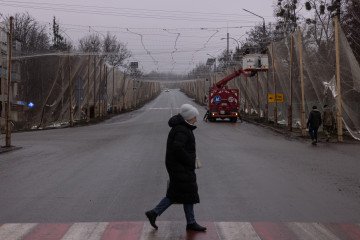
-f88628fa403b11af0b72ec7b062ce954.jpeg)
-b63fc610dd4af1b737643522d6baf184.jpg)

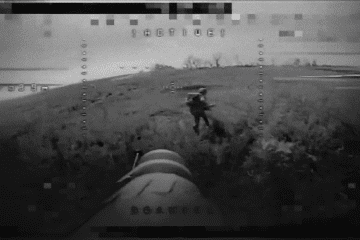
-29a1a43aba23f9bb779a1ac8b98d2121.jpeg)
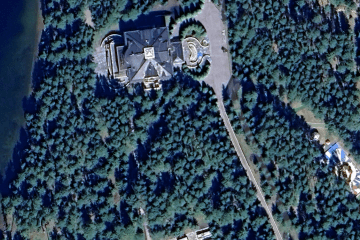
-24deccd511006ba79cfc4d798c6c2ef5.jpeg)